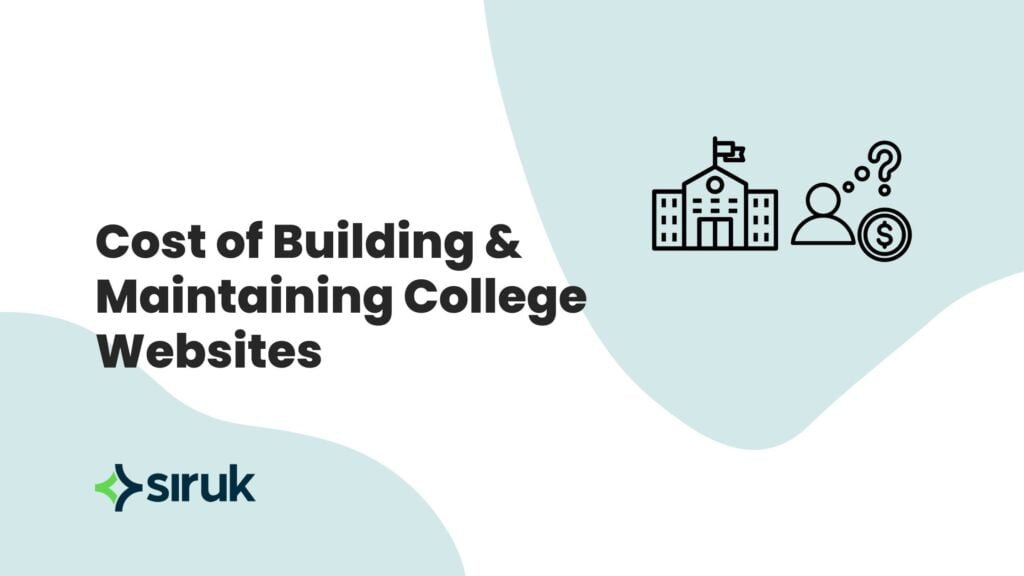Introduction:
In today’s digital age, a college website serves as a crucial gateway for students, parents, and faculty members to explore and engage with an institution. It is an essential tool for establishing an online presence, attracting prospective students, and facilitating effective communication. As a leading web development company, we understand the significance of a well-designed and user-friendly website. In this blog post, we will explore the essential elements that every college website should incorporate to ensure a seamless and engaging experience for visitors.
- Intuitive Navigation: A well-structured and user-friendly navigation system is paramount for any college website. Visitors should be able to easily find the information they seek, whether it’s about academic programs, admissions, campus facilities, or faculty profiles. Implement clear menus, logical subcategories, and a search function to enhance navigation and ensure effortless exploration of the website.
- Responsive Design: With the increasing use of mobile devices, it is crucial for college websites to be fully responsive and accessible across various screen sizes. Responsive design ensures that the website looks and functions seamlessly on smartphones, tablets, and desktops. This adaptability guarantees a positive user experience and accommodates the preferences of today’s tech-savvy generation.
- Engaging Visuals: Capture the essence and spirit of your college through visually appealing imagery and videos. Incorporate high-quality photographs that showcase the campus, facilities, student life, and events. Engaging visuals not only create a positive first impression but also provide an authentic glimpse into the college experience.
- Clear and Concise Content: Content plays a pivotal role in conveying information effectively. Craft clear and concise content that addresses the needs of different target audiences. Provide comprehensive details about academic programs, admissions requirements, financial aid, campus resources, and extracurricular activities. Utilize compelling language to engage readers and highlight the unique aspects of your college.
- Interactive Features: Engage and interact with your website visitors through dynamic features. Incorporate elements such as virtual tours, campus maps, live chat support, and social media integration. Interactive features enhance user engagement and provide valuable opportunities for prospective students and parents to connect with the college community.
- Robust Search Functionality: Colleges typically have vast amounts of information available on their websites. Implementing a powerful search functionality allows users to quickly find specific details, saving time and frustration. An efficient search feature significantly enhances the user experience and helps visitors locate the precise information they are looking for.
- Easy-to-Use Online Forms: Streamline administrative processes by integrating user-friendly online forms for inquiries, applications, event registrations, and more. Simplify the submission process by minimizing the required fields and providing clear instructions. Responsive forms that adapt to different devices will facilitate easy completion for users across various platforms.
- Social Proof: Incorporate testimonials, success stories, and alumni profiles to showcase the positive impact your institution has had on students\’ lives. Social proof adds credibility to your college and helps prospective students envision themselves as part of your academic community.
- Accessibility: Ensure your college website adheres to accessibility guidelines, making it inclusive and usable for individuals with disabilities. Consider factors such as alternative text for images, keyboard navigation, color contrast, and closed captioning for videos.
Conclusion: In the competitive landscape of higher education, a well-crafted and user-centric college website is a crucial asset for attracting and engaging prospective students. By incorporating the essential elements discussed in this blog post – intuitive navigation, responsive design, engaging visuals, clear content, interactive features, robust search functionality, online forms, social proof, and accessibility – your institution can create a memorable and effective online presence. As a leading web development company, we are dedicated to helping colleges create impactful websites that enhance their brand image, streamline communication, and ultimately foster student success. Contact us at Siruk Media to transform your college website into a powerful tool for growth and engagement.

